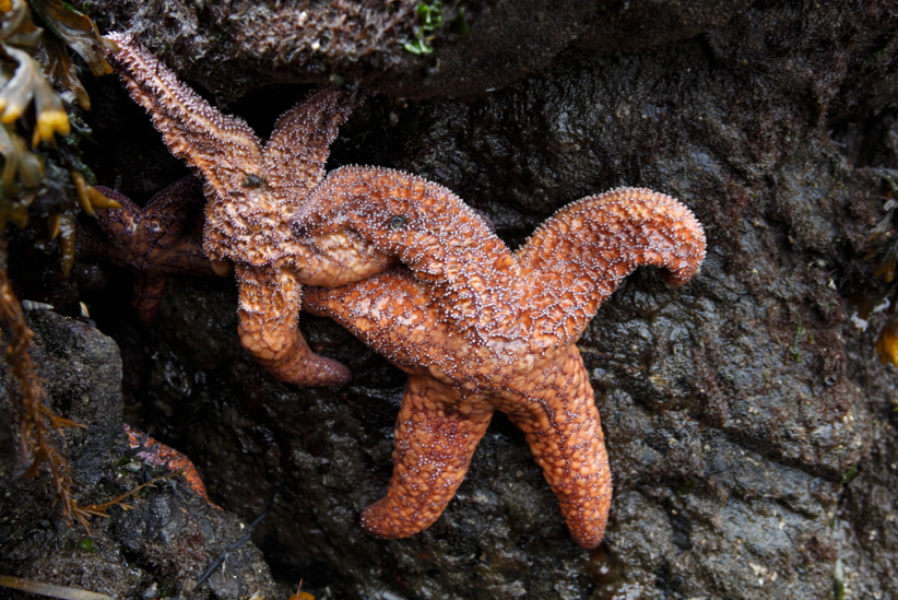
Deflated ochre stars in Puget Sound showing signs of sea star wasting disease, which has infected 20 species of starfish from Mexico to Alaska.
Katie Campbell / KCTS/EarthFix
After a mysterious disease killed millions of sea stars up and down the West Coast in recent years, they've shown some signs of recovery in pockets of southern California. But, in the Pacific Northwest, they're still suffering.
The disease, called sea star wasting syndrome, starts with open sores. Then, “the individuals will lose their arms, so the arms will crawl away from the body,” says Benjamin Miner, a professor at Western Washington University. “Oftentimes, as the sores open up, their internal organs start to kind of pop out. Eventually, the sea star passes away.”
The disease first appeared on the Olympic Peninsula in 2013. Over the next two years, it decimated many species of starfish from British Columbia to Mexico.
Despite recent isolated reports of comebacks, Miner says there's no evidence of a wide-scale recovery.
“I was just out last night at low tide in the middle of the night looking at sea stars and saw a few sick individuals,” he says.
At the end of November, researchers at the University of California in Santa Cruz reported that sea star wasting syndrome is affecting substantial numbers of ochre and mottled stars in the Salish Sea region of Washington as well as smaller numbers of sea stars in British Columbia, the Olympic Peninsula, and northern and central California.
That said, sea stars don’t seem to be going extinct. Dealing with wasting syndrome might just be their new normal.
Sea stars are capable of having thousands of offspring and have had impressive recoveries in the past.
Miner says that's why he remains hopeful that, “In the future, we’ll go down to the shores, and, when we visit them at low tide, we will see many more sea stars than we do now.”
